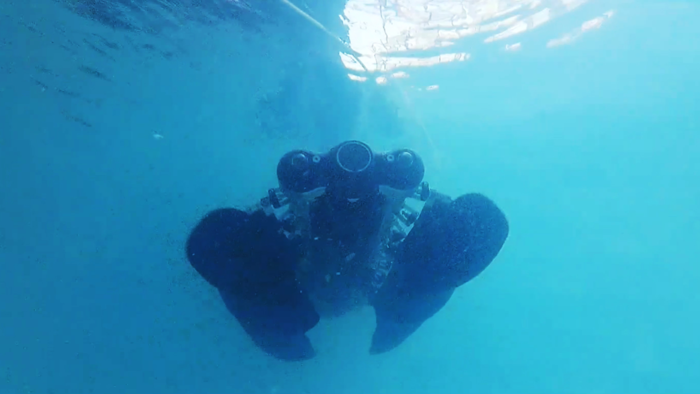【브레이크뉴스 포항】박영재 기자=POSTECH(포항공과대학교)은 환경공학부 권세윤 교수 · 통합과정 임승현 씨 연구팀이 극지연구소 연구팀과의 연구를 통해 북극에서 생활하는 생물들이 높은 농도의 수은에 노출되는 경로를 규명함으로써 북극 생태계 보호를 위한 새로운 방향성을 제시했다고 26일 밝혔다.

이번 연구는 과학 분야 국제 학술지 중 하나인 ‘네이처 커뮤니케이션즈(Nature Communications)’에 게재됐다.
수은(Hg)은 상온에서 유일하게 액체로 존재하는 금속으로 석탄의 연소나 폐기물 소각 등을 통해 환경으로 배출되며, 사람과 자연에 매우 치명적이다. 그런데, 최근 수은 청정지역으로 알려진 북극에 서식하는 북극 대구와 북극곰에서 예상보다 높은 수은 농도가 검출되어 북극 생태계에 대한 우려가 커지고 있다. 북극을 수은 오염으로부터 보호하려면 주요 유입 경로와 출처를 정확하게 파악해야 하지만 기존 분석법은 수은의 총량 측정에만 집중해 정확한 분석에 한계가 있었다.
이러한 한계를 극복하기 위해 POSTECH · 극지연구소 연구팀은 수은의 안정 동위원소7종을 활용한 분석법을 도입했다. 수은은 대기나 해양, 육지 등의 다양한 경로로 유입되며, 유입원마다 고유한 동위원소 비율을 가지기 때문에 이를 비교하면 수은의 유입원을 구분하고 각각의 비율을 추정할 수 있다.
베링 해협과 추크치해, 보퍼트해 등 북극과 인접한 해역에서 수집한 시료(해양 플랑크톤, 어류, 해수, 퇴적물 포함)를 분석한 결과, 북극 생물체 내에 존재하는 수은 약 70%가 대기에 있던 기체 상태의 수은에서 유래한 것으로 나타났다. 이는 대기 중 기체 상태의 수은이 식물과 해염(sea salt) 입자 표면에서 산화되어 해양 생물이 직접 흡수할 수 있는 형태로 전환되어 해수에 공급된다는 것을 의미한다.
연구팀의 분석 결과는 북극 생태계에서 수은의 오염 경로가 저위도 지역과는 확연히 다르다는 것을 보여준다. 저위도 지역에서는 인간의 활동을 통해 수은이 바다로 유입되지만, 북극에서는 이처럼 자연적 과정을 통해서도 수은이 바다로 이동할 수 있다는 사실이 밝혀진 것이다.
POSTECH 권세윤 교수는 “수은 유입 경로와 기여도를 정량적으로 제시해 기후 변화로 급변하고 있는 북극 지역에서 수은 농도와 이동을 예측하는 기초 자료로 활용될 것이며, UNEP의 미나마타협약(국제수은협약)의 정책 방향 설정을 위한 가이드라인이 될 것”이라며 이번 연구의 의의를 전했다.
한편, 이 연구는 과학기술정보통신부와 해양수산부, 해양수산과학기술진흥원의 지원으로 수행됐다.
<구글 번역으로 번역한 영문 기사의 전문 입니다. 번역에 오류가 있을 수 있음을 밝힙니다.>
POSTECH and Polar Research Institute Joint Research Team Identifies New Pathway of Mercury Threatening Arctic Ecosystem
POSTECH (Pohang University of Science and Technology) announced on the 26th that the research team of Professor Kwon Se-yoon of the Department of Environmental Engineering and Integrated Program Lim Seung-hyun, through research with the Polar Research Institute research team, identified the path through which creatures living in the Arctic are exposed to high concentrations of mercury, thereby suggesting a new direction for protecting the Arctic ecosystem.
This research was published in ‘Nature Communications,’ one of the international academic journals in the field of science.
Mercury (Hg) is the only metal that exists as a liquid at room temperature, and is released into the environment through coal combustion or waste incineration, and is very fatal to humans and nature. However, recently, higher-than-expected mercury concentrations have been detected in Arctic cod and polar bears living in the Arctic, known as a mercury-free region, raising concerns about the Arctic ecosystem. In order to protect the Arctic from mercury contamination, it is necessary to accurately identify the main inflow paths and sources, but existing analysis methods have limited accurate analysis because they focus only on measuring the total amount of mercury.
To overcome these limitations, the research team at POSTECH and the Polar Research Institute introduced an analysis method using seven stable isotopes of mercury. Mercury enters through various routes such as the atmosphere, ocean, and land, and since each source of inflow has its own isotope ratio, comparing them allows us to distinguish the sources of mercury inflow and estimate each ratio.
The analysis of samples (including marine plankton, fish, seawater, and sediment) collected from waters adjacent to the Arctic, such as the Bering Strait, Chukchi Sea, and Beaufort Sea, showed that approximately 70% of the mercury present in Arctic organisms originated from gaseous mercury in the atmosphere. This means that gaseous mercury in the atmosphere is oxidized on the surface of plants and sea salt particles, converted into a form that can be directly absorbed by marine organisms, and then supplied to the seawater.
The research team’s analysis results show that the mercury contamination route in the Arctic ecosystem is clearly different from that in low-latitude regions. In low-latitude regions, mercury flows into the ocean through human activities, but in the Arctic, it has been revealed that mercury can also move into the ocean through natural processes.
Professor Kwon Se-yoon of POSTECH said, “It will be used as basic data to predict mercury concentration and movement in the Arctic region, which is rapidly changing due to climate change, by quantitatively presenting the mercury inflow path and contribution, and it will serve as a guideline for setting policy directions for the Minamata Convention (International Mercury Convention) of UNEP,” explaining the significance of this study.
Meanwhile, this study was conducted with the support of the Ministry of Science and ICT, the Ministry of Oceans and Fisheries, and the Korea Institute of Ocean Science and Technology Promotion.


![[人사이트] 문만기 영풍 석포제련소 이사 “무방류 시스템, 산업·환경 공생 밑거름 노력”](https://img.etnews.com/news/article/2025/12/29/news-p.v1.20251229.d43fa428f5b84784b3f06ddd3130a18a_P3.jpg)





